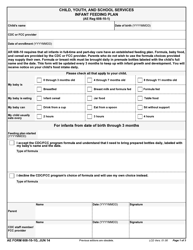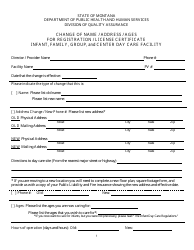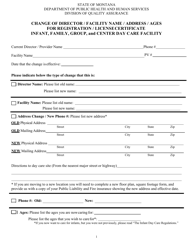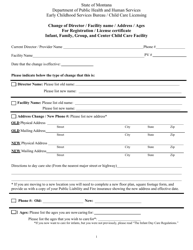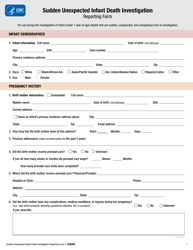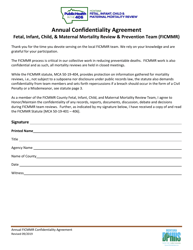Infant Feeding Schedule - Montana
Infant Feeding Schedule is a legal document that was released by the Montana Department of Public Health and Human Services - a government authority operating within Montana.
FAQ
Q: What is an infant feeding schedule?
A: An infant feeding schedule is a plan that outlines when and how often to feed a baby.
Q: Why is an infant feeding schedule important?
A: An infant feeding schedule helps establish a routine for feeding, which can promote healthy growth and development for the baby.
Q: How often should a newborn be fed?
A: Newborns typically need to be fed every 2 to 3 hours, or on demand if they show hunger cues.
Q: How many feedings should a 2-month-old have?
A: A 2-month-old baby usually needs around 6 to 8 feedings in a 24-hour period.
Q: What are some signs that a baby is hungry?
A: Signs of hunger in a baby include rooting, sucking on fingers, and fussiness.
Q: What are some appropriate foods to introduce to a 6-month-old baby?
A: Some appropriate foods to introduce to a 6-month-old baby include pureed fruits, vegetables, and iron-fortified baby cereals.
Q: When can a baby start eating solid foods?
A: Babies can usually start eating solid foods around 6 months of age, when they show signs of readiness.
Q: Should a baby be fed on a strict schedule?
A: While having a general feeding schedule can be helpful, it's also important to be flexible and respond to the baby's cues and needs.
Q: Is breastfeeding or formula feeding recommended?
A: Breastfeeding is generally recommended as the best form of nutrition for infants, but formula feeding can also be a good option if breastfeeding is not possible or desired.
Q: Can I introduce cow's milk to my baby before 12 months?
A: No, cow's milk should not be introduced as a main drink until after 12 months of age. It can be used in small amounts as an ingredient in cooking or mixed with other foods after 6 months.
Form Details:
- Released on September 1, 2012;
- The latest edition currently provided by the Montana Department of Public Health and Human Services;
- Ready to use and print;
- Easy to customize;
- Compatible with most PDF-viewing applications;
- Fill out the form in our online filing application.
Download a fillable version of the form by clicking the link below or browse more documents and templates provided by the Montana Department of Public Health and Human Services.


